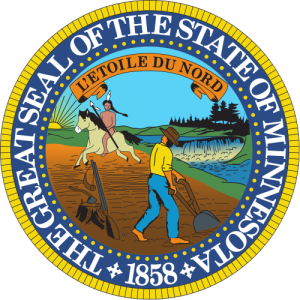 Minnesota Population 2013
Minnesota Population 2013
The United States Census Bureau estimates that the population of Minnesota in 2013 was 5,379,179, which is ranked the 21st largest population in the United States. This estimate shows a 1.4% increase since the last census in 2010, also conducted by the United States Census Bureau. The population density of the state is 67.1 people per square mile, ranked the 31st largest density in the United States.
Minnesota Population Projections
The population of Minnesota is expected to reach approximately 5.77 million people by the year 2020, which is an approximate 7.3% increase from the current population. By the year 2030, the population is expected to reach approximately 6.15 million people, which is an approximate 14.3% increase from the current population. By the year 2040, the population is expected to reach approximately 6.54 million people, which is an approximate 21.6% increase from the current population.
Minnesota Land Mass
The state of Minnesota is approximately 360 miles from east to west and 407 miles from north to south with a square area of 86,943 square miles, making it the 12th largest state in the country. Of the 86,943 square miles, 7,326 square miles are covered by water. The highest point in the state of Minnesota is Eagle Mountain, reaching 2,300 feet above sea level. The lowest point in the state is at Lake Superior, which reaches 602 feet above sea level. The geographic center of Minnesota is located in Park County, 30 miles northwest of Pike’s Peak. Minnesota is bordered by four states: Wisconsin, North Dakota, South Dakota, and Iowa. Canada borders the state on the North, and Lake Superior borders the state on the east.
Minnesota is not broken up into distinct geographic areas, but the land type does vary throughout the state. In the northern part of Minnesota, there are rugged, rocky ridges, and many lakes. Lake Superior and also the highest point in the state are in the northern part of Minnesota. Plains covered by fertile topsoil cover about half of the state. This area is known as some of the richest farmland in the country. In the southeastern corner of the state, the land is flat with some deep valleys formed by rivers. Lastly, in the southwestern corner, the land is made up of sand, gravel, and clay with some intertwined rivers.
Minnesota Demographics
Of the approximate 5.38 million people in the state of Minnesota, about 50.3% of the population is female, while 49.7% is male. Also, approximately 87% of the population identifies as white (including Hispanic or Latino). But, out of that 87%, about 5% do identify as Hispanic or Latino and the other 82% as Caucasian. Those that identify as Black or African American make up only 6% of the entire population of the state of Minnesota. The rest of the population is made up of those that identify as Asian, American Indian, Alaskan Native, Hawaiian, other Pacific Islanders, or those that identify as two or more races. These other races make up about 7% of the Minnesota population.
Minnesota Religion
The population of Minnesota identifies as religious at a higher rate than the national average. About 56% of the state population identifies as religious, compared to the national average of 49%. Out of the 56%, about 22% identify as members of the Catholic Church, making it the largest denomination in the state of Minnesota. The next largest denomination is the Lutheran Church, making up 20% of the population. All the other Christian denominations make up about 13% of the population. Those who identify as Jewish, Islamic, or Eastern religions only make up 1% of the population.
Explore Minnesota Tourism With Joe Mauer

Minnesota Sports
The state of Minnesota has professional sports in all of the major sports: baseball, basketball, football, hockey, and soccer. Minnesota’s team represented in Major League Baseball is the Minnesota Twins, located out of Minneapolis, Minnesota. The team plays at Target Field as of 2010. Minnesota’s team represented in the National Basketball Association is the Minnesota Timberwolves, located also out of Minneapolis. The basketball center is similarly known as the Target Center. Minnesota’s team represented in the National Football League is the Minnesota Vikings, located out of Minneapolis. The team plays in the Hubert H. Humphrey Metrodome. Minnesota’s team represented in the National Hockey League is the Minnesota Wild, located out of St. Paul. The team plays in the Xcel Energy Center. The team is a relatively new team, as it was founded in 1997. Lastly, Minnesota’s team represented in the North American Soccer League is the Minnesota United FC, located out of Blaine, Minnesota, north of Minneapolis. This team is also quite new, as it was founded in 2010.
Other Resources
Explore more about the population statistics of Minnesota using this link.


